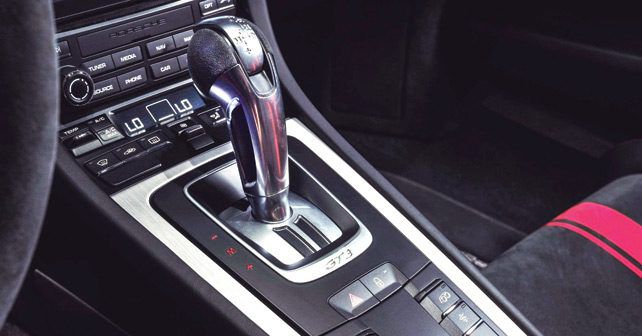
Dual-clutch gearboxes have been in production cars for over a dozen years now, so Karl can’t figure out why automakers haven’t managed to perfect them as yet.
We should be glad to have companies like Mercedes-Benz, Porsche and Audi. Without them, we’d still be running around in cars that kill us when we crash, or don’t stop us from crashing at all.
Think about anti-lock braking. It was first introduced on the Merc S-Class almost 40 years ago, but is now available on entry level hatchbacks. Without someone to buy cars that introduce the technology, the R&D costs don’t get amortised, enabling a trickle-down effect, putting it within reach of mere mortal mankind. The same goes for airbags, satellite navigation, autonomous braking and plenty of other tech.
We need companies to try new things, so that it can be implemented across the board. So, let’s cast our mind back to 1983 and Porsche’s 956 endurance car. It was quick – very quick – and part of its terrific turn of speed was down to the gearbox, which shifted faster than a manual transmission. It was the first use of the Porsche Doppelkupplungsgetriebe (PDK) ‘box. But thanks to its tendency to break down a little too often, it wasn’t until 2003 that we saw the dual-clutch transmission’s (DCT) first application in a road car.
That privilege went to the Audi TT 3.2-litre, which pipped the Golf R32 for line honours by a small margin. And now, the list of manufacturers that have implemented the DCT is long – Lamborghini, Kia, BMW, BYD, Mercedes-Benz, Ferrari, Fiat Chrysler, Ford Motor Company, General Motors, Honda, Hyundai, John Deere, Lotus, McLaren Automotive, Mitsubishi, Nissan, PSA Peugeot Citroën, and Renault, among others.
Some do it well – think McLaren, Ferrari and BMW. Others, however, are simply flogging a dead horse. It’s a bit like Porsche’s dogged determination to stick with the rear-mounted engine. They get it to work, but there are plenty of far more balanced machines out there which are more user friendly, and even the Cayman and Boxster don’t use the same layout – an admission of imperfection if ever there was one.
The issue with DCTs came to light when I tested the new Tiguan recently. Volkswagen has been using a DCT now for 14 years. If you use the same technology over-and-over again for that long, you’d think it would be perfect by now, right? After all, look at the gains in sat-nav over the same period – it’s faster, clearer and more detailed. Something as crucial to the drive experience as a gearbox needs to be right before it can head to the showroom, so to get the same lag off the line as there was several years ago is quite disappointing.
Okay, so it wasn’t entirely unexpected – I’ve been driving DCTs for as long as they’ve been in production cars – but after comparing this one to Ferrari’s DCT I drove recently, it’s sad that VW hasn’t put as much time and effort into getting it as perfect as Ferrari has. It may be comparing apples with oranges, especially when you’re talking price, but, as mentioned in the outset, after amortising the R&D over the last 14 years, even the entry-level ‘boxes should be perfect. Sadly, they’re not. And it’s not just the lag – in change of mind scenarios, they hesitate or just don’t shift at all, while occasionally they hang in a lower gear instead of changing up.
Is this the reason that Audi’s S4, S5 and RS6 still use a conventional auto instead of a DCT? They won’t say, of course, but given that ZF’s eight-speed is as perfect a gearbox as you’re likely to find in self-shifters, it won’t be surprising if more carmakers switch back to proper autos.
And until they can get a DCT to behave like a genuine alternative to an auto, that move won’t be lamented.























Write your Comment